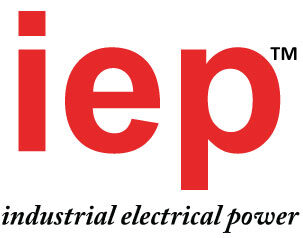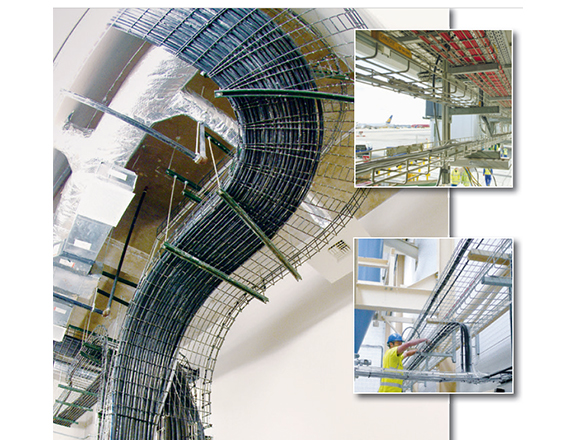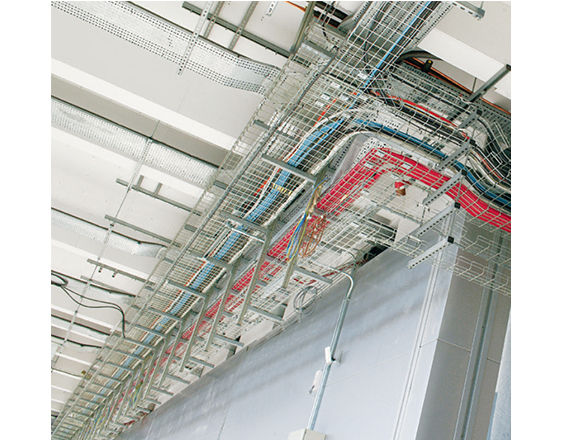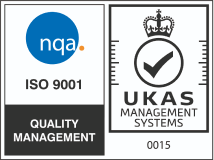Wire Mesh Cable Tray: The Smarter Cable Management Solution
Wire Mesh Cable Tray
For a fast, flexible, and efficient cable management system, the wire mesh cable tray is the ultimate choice. CABLOFIL® mesh cable trays offer unmatched adaptability, ensuring seamless installations with easy upgrades and minimal maintenance. Designed for both commercial and industrial applications, they provide improved safety, cost-effective logistics, and a streamlined approach to routing cables.
Engineered for reliability, CABLOFIL® trays eliminate installation delays caused by unforeseen obstacles. Their open design enhances airflow, reducing cable overheating while making inspections and modifications effortless. Whether for data centres, electrical rooms, or industrial setups, these trays are the ideal solution for complex installations.
For a complete and professional setup, pair your tray with stainless steel cable tags—ensuring clear, durable identification for organised and easily managed wiring systems.
Upgrade your cable management today—explore our premium solutions now!
Cablofil Wire Mesh Cable Tray/ Cable Basket
Standards and Directives
The manufacture and use of cable tray is subject to strict and precise regulations. Cablofil® Wire Mesh Cable Tray gives an update on the applicable texts and guarantees conformance of its products. Difference between a directive and a standard A directive defines the requirements related to the effects of the products on property and persons, but it does not explain in direct terms how to comply: this is the function of the standards.
The Standards
The IEC standard 61537: ” cable tray systems and cable ladder systems for electrical installations” defines the characteristics of the cable tray product. This standard defines the configurations of the mechanical tests to be carried out on the cable tray, brackets, hangers and other accessories. It also specifies the requirements and methodologies for electrical continuity tests that the cable trays and splices must meet. All mechanical and electrical performance levels of the Cablofil® ranges are tested according to the methods described in this standard.
The CE marking
The standard IEC 61537 is the “product” standard defining the requirements and test methods for the cable tray and cable ladder systmes. Being the only standard harmonised at European level, it is the reference when markin CE on the products, as requested in LVD. All Cablofil® cable traysnand accessories now comply with the European standards. The products are therefore marked with the CE logo.
The Directives
The following directives apply directly to the cable tray:
• The Low Voltage Directive 73/68/CEE known as “LVD”
• Directive 93/68/CEE known as “CE marking”
The low voltage directive (LVD) 73/23/CEE harmonises the legislation of member states and covers consumer and capital goods intended for use within the following voltage limits:
– 50 to 1000 Volts AC
– 75 to 1500 Volts DC
Directive 93/68/CEE, known as the “CE MArking” Directive, modifies the Low Voltage Directive for issues concerning the conformance evaluation and marking procedures.
Special case of the EMC directive 89/336/CEE
The EMC Directive 89/336/CEE applies exclusively to the active elements ( is carrying a current or to which a low current is applied). Since, by definition, the cable tray is a passive element, this directive is therefore not applicable. Correctly connected to the earth network, however, the metal cable trayn plays a positive role in the correct EMC of the installation.
Benefits of Cablofil® Wire Mesh Cable Tray or Cable Basket for Power Cable installations
• Mechanical Performance
Cablofil® is a rugged steel cable support product that can withstand the rigors of pulling large power cable and of harsh, abusive environments. Cablofil wire mesh cable tray has safely supported power cables at thousands of facilities worldwide and has been tested to multiple standards across the globe. The load tables and technical guide can be used to select the right product for your power cable application.
• Flexibility
Cablofil wire mesh is designed to be field modified, providing a quick and effective way to make changes during installation. Horizontal bends, vertical bends, tees and crosses are all made onsite, reducing the components required to be purchased and maximizing the installer’s productivity since there is no downtime waiting for the special fittings to be manufactured and shipped as is required for standard cable tray.
• Maintenance
Its open structure makes it easy to inspect the cable installation to further simplify cable and equipment maintenance work.
• Safety
Cablofil®’s unique wire mesh design provides a continuous safety edge on the top wire offering the best cable protection in the industry. Round wire provides smooth cable pulling surface when compared to thin sheet metal edges. The wire mesh structure provides EMC shielding and has been tested and certified by UL as an equipment grounding conductor.
• Cleanliness
Retention of dust, ingression of bacteria and any debris obstructing the cable path are greatly reduced due to the open mesh construction of Cablofil®.
• Cost Savings
The open mesh construction of Cablofil® provides the ventilation advantages of free air cable. The material, labor and operating cost savings are substantial when comparing Cablofil® to enclosed raceway systems. Initial material costs are lower for both the actual cable management components and the cable itself since the cable will be rated for free air and usually can be a smaller size. The labor cost to install cable tray is much less than that of raceways systems and operating costs are less due to the fact that the cables run cooler, reducing resistance, and maintenance is simpler in an open cable management system.
• Cable Performance
By improving the heat dissipation of power cables, substantial savings can be made on the installation and operation costs. The open structure of Cablofil® maximizes ventilation. The following test results show just how dramatic the savings can be. The performance level of the cable depends on its electrical resistance. This is proportional to the resistivity, which is in turn proportional to the temperature. When the temperature rises, the cable resistance increases and the cable performance drops. When electric current flows through the cable, the temperature of the central copper or aluminium conductor increases up to an operating temperature of about 70°C to 80°C. Heat given off by the cable due to the Joule effect poses no problem in free air. In a confined space, however, such as inside a closed cable tray or raceway, the cable will heat up and its performance will drop therefore less current will be carried. Studies have shown that excessive cable temperature consumes a considerable portion of total energy costs.
• Cable Ventilation Saves Money
A low cost solution is to ventilate the system by installing the cables in Cablofil®. Cablofil® is in fact the nearest thing to a cable in free air as it represents only 10% solid surface area, and in many cases is considered as such by standard IEC 60 364 standard. (NFPA 79)
Using an unventilated, or only slightly ventilated, installation method with some configurations (several power cables running in the cable tray) require the use of cables of cross-section 1.5 to 2 times larger than with Cablofil®.
• Fiber Optic Cables – The Cablofil® Wire Mesh Cable Tray or Cable Basket Solution
Just like copper cables, optical fiber cables must conform with professional installation standards. Cablofil® Wire Mesh Cable Tray or Cable Basket offers 3 major advantages:
• The rounded shape of the wire and a smooth safe edge.
• A range of customized accessories (Cablexit, EZ Velcro…).
• Open mesh ensuring easy maintenance and checks of the installation quality.
• Copper Communication Cables – The Cablofil® Wire Mesh Cable Tray or Cable Basket Solution
Communications cable technology continues to change rapidly as the use of high-speed networks is continues to expand. Cablofil® wire mesh cable tray is the ideal support for copper communication cables (coaxial cables and twisted pairs). Cablofil Wire Mesh Cable Tray or Cable Basket has been thoroughly tested to ensure the performance of copper communication cables are maintained for years to come.
Material Selection and Corrosion Resistance Best Practices
Corrosion of metallic materials is a common concern in most applications. It is very important that the environmental conditions of a project be reviewed and understood thoroughly before selecting the proper material. Proper material selection will ensure that the cable tray products meet the expected service life without a reduction in performance. Cable trays are mainly exposed to atmospheric corrosion. The environment in which the cable trays are installed is therefore the main criterion in the choice of surface treatment or the type of steel. Cablofil offers wire mesh cable tray in four basic material/finish options.
• EZ -Electrogalvanized Steel, ASTMB 633 – Standard EN 12 329
INDOOR Commercial Office, Retail, Institutional, Computer Room, Light Industrial, Warehousing
Less than 5% red rust in most dry environments after 20 years.
• GC – Hot-Dip Galvanized Steel, ASTM A123 – Standard EN ISO 14 61 (formally BS EN 729)
• OUTDOOR Power Plants, Industrial
Less than 5% red rust in most outdoor environments after 30 years.
• 304L – Type 304L Stainless Steel, Standard EN 10088-2 – AISI 304L – X2CrNi18.09
INDOOR-OUTDOOR corrosive Wash Down, Industrial
Less than 5% rust stain in most outdoor environments after 30 years. No significant change to base material.
• 316L – Type 316LStainless Steel, Standard EN 10088-2 – AISI 316L – X2CrNiMo17.12.2
OUTDOOR – Highly corrosive Chemical, Offshore, Marine, WasteWater, Pulp and Paper
Less than 5% rust stain in mostoutdoor environments after 50 years. No significant change to base material.
• Stainless Steel (SS) Finish
There are numerous types of stainless steel: austenitic, ferritic, martensitic. Cablofil® has selected 2 austenitic steels, 304 L and 316 L, for their excellent corrosion resistance. This is primarily due to their very low carbon content (“L” for “low carbon”).
• Aggressive environment: Stainless Steel
In highly aggressive environments, rather than changing the type of surface treatment, a different type of steel is used. With its wide Stainless steel range, Cablofil® can be installed everywhere, even under the harshest conditions. Damage by abrasion, cutting or machining is quickly repaired.
• Decontamination of Stainless Steel
Post-treatment of stainless steel is as important as the choice of grade. The manufacturing operations (straightening, welding, profiling, stamping) pollute the stainless steel with particles of carbon steel, which affect the product quality.
• Acid pickling, before degreasing, eliminates these pollutants.
• Passivation consists of artificially creating a film of chromium oxide on the surface therebycreating a uniform finish and giving the stainless steel optimum corrosion resistance.
These two steps, considered as crucial by Cablofil®, guarantee product lifetime and therefore the lifetime of the installation. The salt spray and SO2 (sulphur dioxide) corrosion resistance tests demonstrate this point. Pickling and passivation give the Cablofil® stainless steel a very light grey and matte finish. The correct choice of stainless steel grade, followed by pickling and passivation, ensures that Cablofil® cable tray can withstand marine, chemical and agriculture environments.




